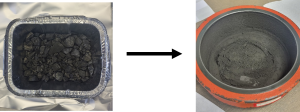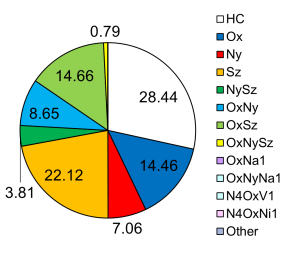Postdam, Germany: October 2022
Potsdam, Germany: October 2022.
The core of my ELP is understanding how metals are enriched in black shales. Some shales, notably in Yukon, Canada and the Guizhou province, China, have extreme nickel enrichment. These “hyper-enriched black shales” contain, on average, four weight percent (wt%) nickel. A ‘normal’ concentration of nickel in shales is 0.01 wt% – why hyper-enriched shales have so much more nickel is a debated topic.
I took a trip to the German Research Centre for Geosciences in Potsdam, south of Berlin. The centre is located on Telegrafenberg hill, which has seen science since installing an optical telegraph in 1832. Now the Albert Einstein Science Park includes, in addition to the centre of Geosciences, the Astrophysical Institute Potsdam, the Alfred Wegener Institute for Polar and Marine Research and the Potsdam Institute for Climate Impact Research.
Figure 1 GFZ Helmholtz Centre Potsdam
My visit was to work with Dr. Stefanie Pötz, an organic chemist specializing in fourier-transform ion cyclotron resonance mass spectrometry. Abbreviated as FT-ICR-MS, it is a technique that allows for high-resolution characterization of organic material. Although we know the organic material was a key component in concentrating nickel in the HEBS, the exact process is unclear. We are hoping that careful examination of the organic material will hold additional clues as to why these shales show such high concentrations of nickel.
An initial crush turns larger chunks into smaller pieces, then are placed between metal discs that are shaken, pulverizing the sample into a fine powder.
Figure 2. Turning rocks into powder
The organic material is extracted from the powder using a Soxhlet extractor device. An organic solvent solubilizes the organic fraction, leaving behind all inorganic components. Unfortunately, during my visit, the FT-ICR-MS was down due to building maintenance. However, some of the samples were analyzed before my arrival, and a common data put likes like:
This gives a quick breakdown of the types of organic molecules within the organic fraction of the sample. Some of the organic components even include Ni! Reading this diagram we can see that 28.44% of the organic material is just hydrogen and carbon (HC), 14.46% contains some oxygen (Ox), 7.06% contains some nitrogen, et cetera.
More samples will be analyzed, and when we compare the HEBS to the surrounding barren shales, we will gain additional insight into the mechanism behind nickel enrichment.





